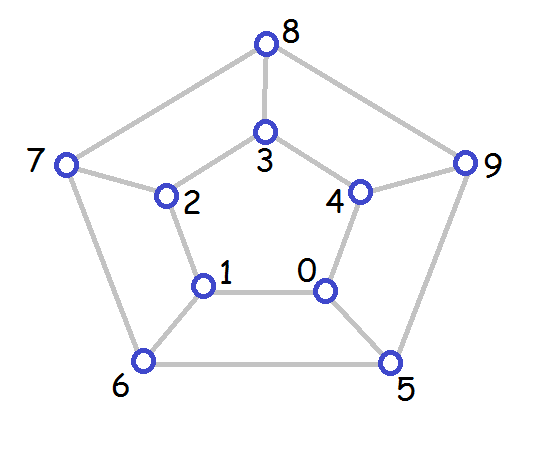
Due date: Tues. Dec. 9 by 11:55pm.
Late deadline: Tues. Dec. 16 at 11:55pm with a 10% late penalty.
The goal is to design a fast C or C++ program for the dominating set problem. The program takes as input a sequence of graphs, and finds a minumum dominating set for each one.
Input must be from standard input.
and output must go to standard output.
I am going to run it like this:
a.out < in.txt > out.txt
Do not hardcode a file name into your program. Your programs will be tested for correctness using various command files. If you want your program to run correctly, it is very important to follow the input and output specifications exactly.
Use:
#include <stdio.h>
#include <stdlib.h>
Some compilers include these automatically.
Others do not and programs without them do not compile.
Use a constant NMAX for the maximum number of vertices:
#define NMAX 800
If you use an adjacency list data structure, you can use:
#define MAX_DEGREE 200 // Modified for next time.
If NMAX is not big enough, print an error message that explains
that the user should increase NMAX and recompile.
If MAX_DEGREE is not big enough, print an error message that explains
that the user should increase MAX_DEGREE and recompile.
Do not use malloc/free.
Using repeated malloc/free calls will end up slowing the program
down and could create bugs that cause memory leaks. Memory
leaks are a disaster when you are working with large computations.
Vertices of an n-vertex graph are numbered from 0 to n-1.
A graph is input as:
<number of vertices>
Then for each vertex v:
<degree of v> <neighbours of v>
Your program should permit the user to use arbitrary amount of white space and arbitrary line spacing when typing these numbers in.
For example, an input file like this:
10 3 1 4 5 3 2 0 6 3 3 1 7 3 4 2 8 3 0 3 9 3 0 9 6 3 1 5 7 3 2 6 8 3 3 7 9 3 4 8 5 12 3 1 5 6 3 2 0 7 3 3 1 8 3 4 2 9 3 5 3 10 3 0 4 11 3 0 11 7 3 1 6 8 3 2 7 9 3 3 8 10 3 4 9 11 3 5 10 6
Represents the following two graphs:

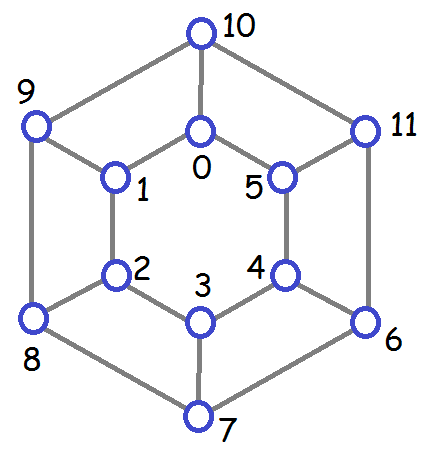
For each graph,
first print the graph number (number the graphs starting at 1)
followed by the number of vertices.
Each time you find a better dominating set,
print it.
To print a dominating set:
First print either 0 or 1 where:
0 means that the dominating set is the best found so far, and
1 means that the dominating set is a minimum dominating set
for the graph.
Then print the number of vertices in the dominating set
followed by the vertices in the dominating set.
It is assumed that after you have printed a dominating
set prefaced by 1 that the computation on that graph
has completed.
For example, for the input file above, the output might be:
1 10 0 5 5 6 7 8 9 0 3 4 6 7 1 3 4 6 7 2 12 0 6 6 7 8 9 10 11 0 4 5 7 8 9 1 4 5 7 8 9The first line represents this dominating set:
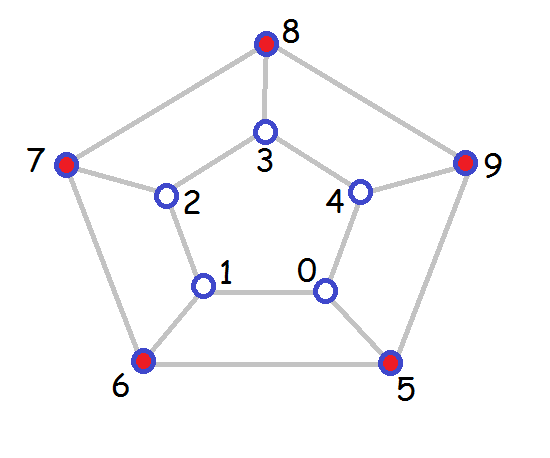
The second line represents this dominating set:
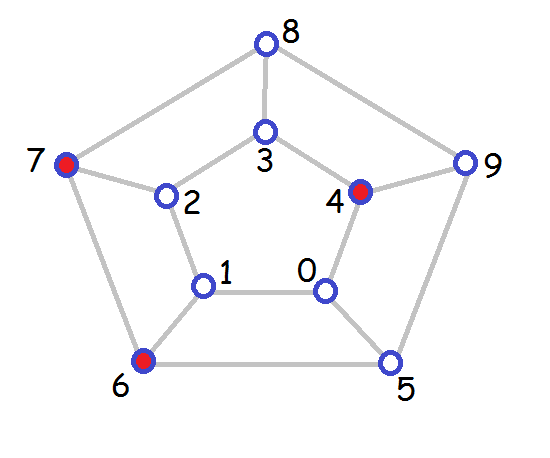
The third line is printed at the end of the computation for the graph and indicates that this dominating set is a minimum one.
The first line for the second graph represents this dominating set:
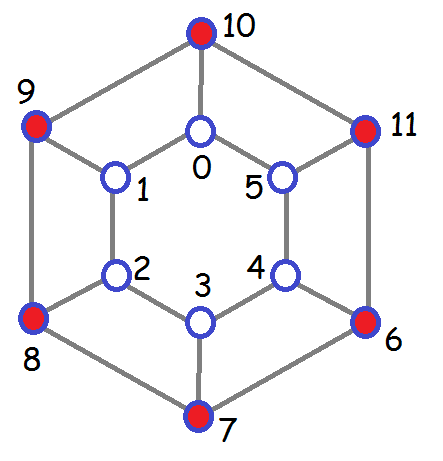
The second line gives this dominating set:
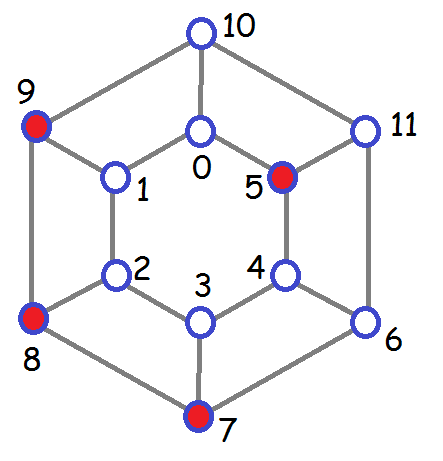
The third line for this graph indicates that this dominating set is a minimum dominating set.
IMPORTANT:
The test cases could include problems that are too difficult
for your program to solve in a reasonable amount of time.
To get credit for what your program can do within the time
limit, use
fflush(stdout);
each time you print a dominating set.
Here is some sample code that you could use:
#include// Status 0 means the dominating set is the best so far. // Status 1 means the dominating set is a minimum dominating set. // Code created by Wendy Myrvold. void print_solution(int status, int size, int dom_set[]) { int i; printf("%1d %3d ", status, size); for (i=0; i < size; i++) printf(" %3d", dom_set[i]); printf("\n"); fflush(stdout); }
Upload each file separately. Do not archive or compress the files. You are allowed an unlimited number of submissions until the deadline. Do not upload "draft" submissions (they do not get downloaded for marking).
For CSC 422 students, the exact algorithm is worth 30% of the final mark in the class, and designing a good heuristic algorithm merits bonus marks. For CSC 522 students, the exact algorithm is worth 20% of the final mark, and designing a good heuristic algorithm is worth 10%.
The marking scheme: